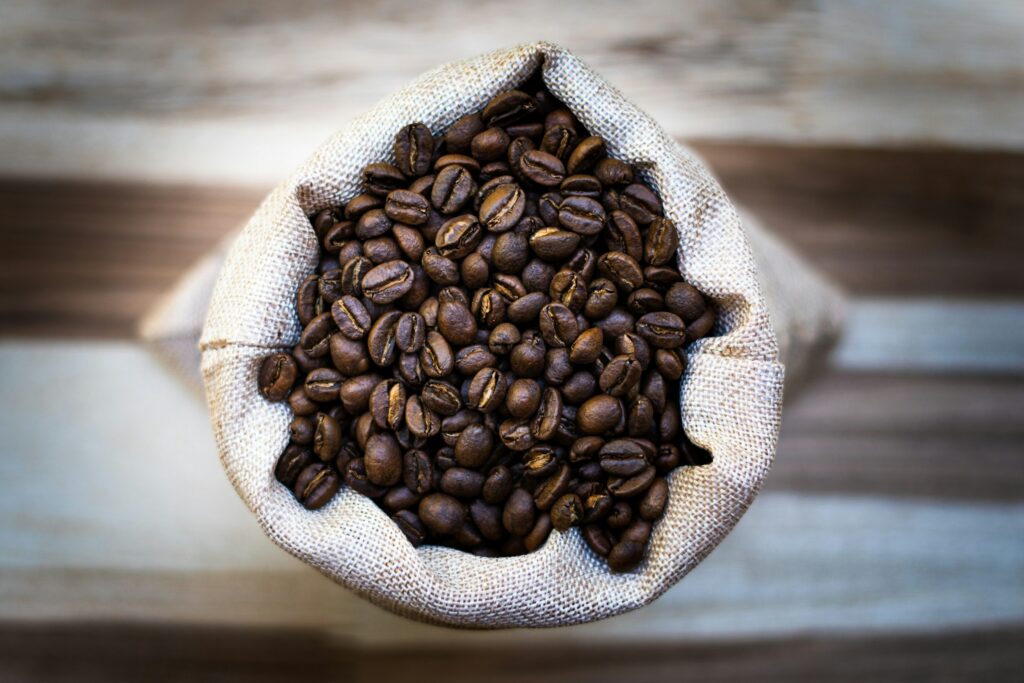Ever sip a cup of coffee and wonder where all those flavors come from? One day it’s bold and chocolatey, the next it’s fruity with a hint of lemon, and you didn’t change a thing.
That’s where the battle begins: blends vs. single-origin coffee.
Blends bring balance. Single-origins bring character. Both have their fans. But which one tastes better?
In this post, we’ll break down the key differences, sip by sip!
What Is Single-Origin Coffee?
Single-origin coffee comes from one specific place, like think a single country, region, or even a single farm. It’s like sipping a postcard from that exact corner of the world.
No blending, no mixing, but just pure, unfiltered identity in your cup.
Popular examples include Ethiopian Yirgacheffe, known for its floral and citrusy notes; Colombian Supremo, which leans smooth and nutty; and Kenyan AA, often bursting with bold, wine-like acidity.
What makes single-origin stand out is its clarity of flavor. You’ll often taste more brightness, unique tasting notes, and a cleaner finish because nothing gets lost in the mix.
Coffee lovers call this “terroir”, which is a fancy word for how the local soil, altitude, and climate shape the bean’s personality.
And since these coffees are traceable back to their roots, you know exactly what you’re drinking and where it came from.
What Is a Coffee Blend?
A coffee blend is exactly what it sounds like—a mix of beans from two or more places, blended together to create a well-rounded flavor.
Roasters do this to strike the perfect balance: maybe one bean brings the boldness, another adds a touch of sweetness, and a third smooths it all out. It’s like creating a coffee dream team.
Blends are popular because they offer consistency, and you get the same taste with every bag, no matter the season.
They’re also designed to be approachable, which is why they shine in espresso blends, breakfast blends, and those cozy house specials you find at your favorite café.
The flavor? Think smooth, mellow, and versatile. They often play well with milk and sugar, making them great for lattes, cappuccinos, or your go-to morning cup.
Flavor Comparison: Blends vs. Single-Origin
Single-Origin:
Single-origin coffee is like a solo artist on stage—bold, unique, and full of personality.
Each sip tells you exactly where it came from, whether it’s a bright citrus note from Ethiopia or a deep berry flavor from Kenya.
These coffees often highlight one or two standout flavors, which makes them exciting for folks who like to taste the finer details. But there’s a catch—they can be a little unpredictable.
Since they come from one region or farm, the flavor may change with the seasons or harvest.
That’s part of the charm, though. It keeps things fresh and interesting, especially for brewing methods like pour-over or French press, where subtle differences really shine through.
Blends:
Now, blends are more like a band. Instead of one flavor taking the spotlight, everything works together to create a smooth, balanced experience.
Roasters carefully combine beans to mellow out sharp edges, boost sweetness, or round off acidity. The result? A dependable flavor profile that stays the same all year, rain or shine.
This makes blends ideal for espresso, lattes, and cappuccinos, where consistency matters.
You don’t want a surprise note of grapefruit popping up in your morning flat white. Blends keep it cozy, smooth, and crowd-pleasing, like your favorite playlist on repeat!
Which Tastes Better? (It Depends…)
Here’s the honest truth: there’s no one-size-fits-all winner when it comes to taste. It depends on a few key things, starting with how you brew.
If you’re into manual methods like pour-over, French press, or AeroPress, single-origin coffee is your best friend. Those methods bring out the distinct flavors and let the bean’s character shine.
On the flip side, if you’re team espresso or love a milky latte in the morning, blends are the way to go.
They hold up better under pressure, literally, and give you that rich, balanced flavor without clashing with milk or sugar.
Your taste buds also play a role. If you’re new to coffee or just want something smooth and easy to drink, blends offer a safe, consistent experience.
But if you’re the adventurous type who loves picking up subtle notes like “dried cherry” or “hint of jasmine,” single-origin coffee is where the magic happens.
Finally, consider your routine. Want to shake things up and try something new each week? Go single-origin.
But if you need a trusty brew that tastes great every time, rain or shine, blends won’t let you down. It’s not a battle of better or worse, but it’s just about what fits your mood, method, and morning vibe.
| Type | Pros | Cons |
|---|---|---|
| Single-Origin | Distinct flavors, origin traceability | Less consistent, seasonal availability |
| Blends | Balanced, consistent, good with milk | Less unique, harder to trace back to origin |
How to Choose What’s Right for You
If you’re torn between blends and single-origin, don’t sweat it because you don’t have to pick a side forever. The best way to find your favorite? Try both.
Brew them back-to-back and sip them side-by-side. It’s like a mini taste test at home. You’ll start to notice which one makes your taste buds do a happy dance.
Start small. Grab sample-size bags or check out a local roaster who offers tasting flights or rotating specials.
Smaller roasters often highlight single-origins one month and house blends the next, so it’s a fun, low-risk way to explore.
Match your choice to your brewing style. If you’re working with a pour-over or French press, single-origin beans will shine brightest.
If you use an espresso machine or a drip brewer, blends usually give a smoother, more balanced cup.
And think about your coffee goals. If you want a reliable, everyday go-to, a blend might be your ride-or-die.
But if you’re a flavor adventurer, chasing new notes like “stone fruit” or “toasted almond,” single-origin is your playground.
You don’t need to pledge allegiance, but just let your mood (and your mug) lead the way.
Expert Tips for Tasting Both
Want to really taste the difference between blends and single-origin coffee?
Start by keeping things fair—brew both using the same method. If you’re doing pour-over for one, don’t switch to a drip machine for the other.
You’ll get cleaner results and a clearer sense of what each bean brings to the table.
Next, slow down and use all your senses. Take in the aroma first because it often gives away the flavor profile before the first sip.
Then focus on acidity (that pleasant tang), body (how heavy or light it feels in your mouth), and the finish (what flavors linger after you swallow).
Some coffees vanish instantly; others leave a trail of cocoa, fruit, or spice.
And here’s the big one—drink it black, just for the test. Milk and sugar are great, but they can cover up those subtle notes that make each coffee unique.
After the taste test, add milk or sugar if you want, but give each coffee a chance to sing solo first. You might be surprised which one steals the show.
Final Words
There’s no clear winner here—just what tastes right to you. Some days, you might crave the bold, clean punch of a single-origin. Other days, a smooth, comforting blend hits the spot.
Coffee isn’t a competition. It’s a journey. So experiment, sip slowly, and enjoy figuring out what makes your perfect cup.
Tried both? Drop a comment below and let us know which one won your heart or your morning routine!
FAQs
Is single-origin coffee more expensive?
Often, yes. Single-origin beans usually come from smaller farms with limited harvests. You’re also paying for traceability and unique flavor—not just caffeine.
Are blends lower quality?
Not at all. High-quality blends are crafted using top-tier beans. The goal is flavor balance, not cutting corners.
Which is better for espresso?
Most cafés stick with blends for espresso. They’re more consistent, smoother with milk, and easier to dial in for every cup.



